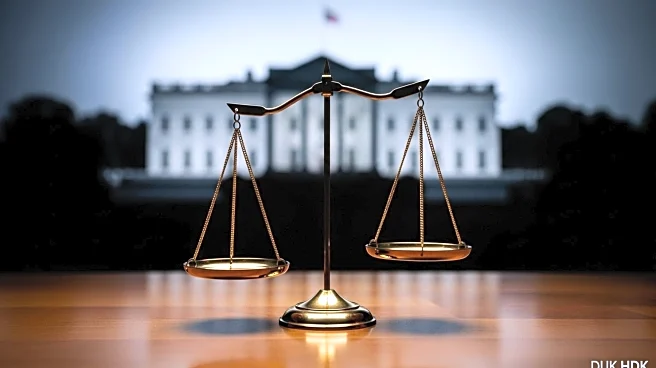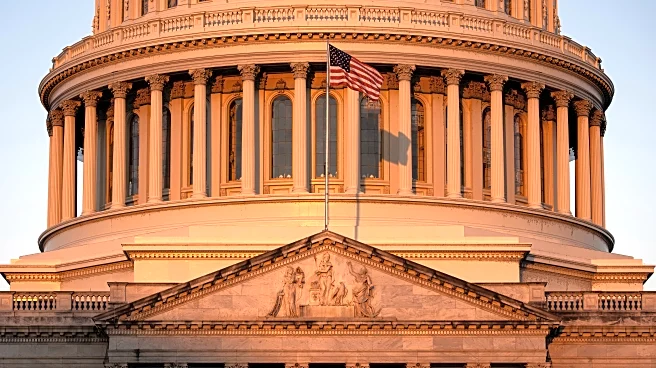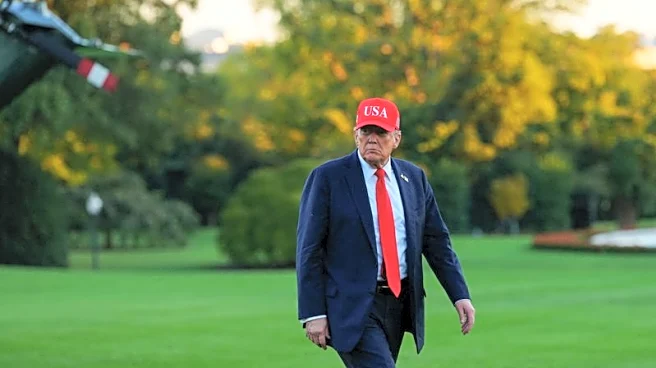What is the story about?
What's Happening?
The White House has questioned the legal basis of a 2019 law that guarantees backpay to furloughed federal workers following a government shutdown. The Office of Management and Budget (OMB) revised its guidance, suggesting that backpay is contingent upon future congressional appropriations. This interpretation contradicts the Office of Personnel Management's stance that furloughed workers will receive backpay once funding is restored. Legal experts argue that the OMB's position fails the 'plain meaning rule,' which suggests that Congress intended to provide unconditional backpay. The law, enacted during the 2018-2019 shutdown, was designed to prevent federal workers from being used as leverage during budget negotiations.
Why It's Important?
The interpretation of the law by the White House could have significant implications for federal employees, potentially delaying or denying backpay for those affected by government shutdowns. This could lead to financial instability for workers who rely on timely compensation. The issue also raises concerns about the administration's approach to labor rights and its willingness to challenge established legal interpretations. If the administration proceeds with withholding backpay, it may face legal challenges from federal employee groups, which could result in lengthy court battles and further strain on government resources.
What's Next?
If the White House maintains its stance, federal employee groups are likely to initiate legal action to ensure backpay is provided. Potential lawsuits could be filed with the Merit Systems Protection Board or the U.S. Court for Federal Claims, although these processes are costly and time-consuming. The administration's decision may also prompt legislative action from Congress to clarify the law and protect federal workers' rights. The situation could influence future negotiations on government funding and shutdowns, as stakeholders seek to avoid similar disputes.
Beyond the Headlines
The controversy highlights broader issues of labor rights and government accountability. It underscores the precarious nature of federal employment during budgetary conflicts and the need for clear legal protections for workers. The case may also influence public perception of the administration's handling of labor issues and its commitment to supporting federal employees.
AI Generated Content
Do you find this article useful?















